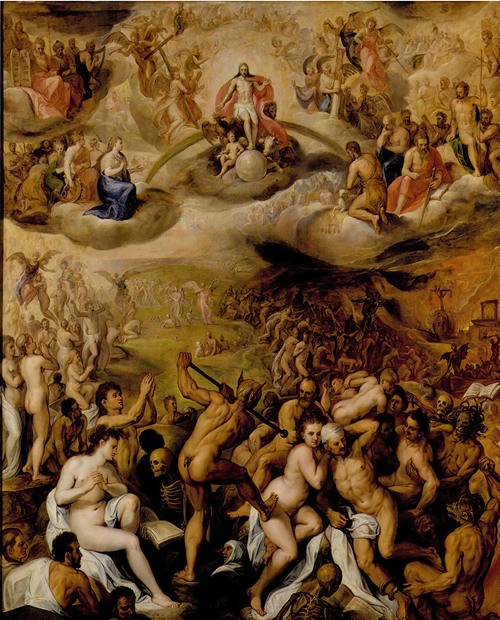
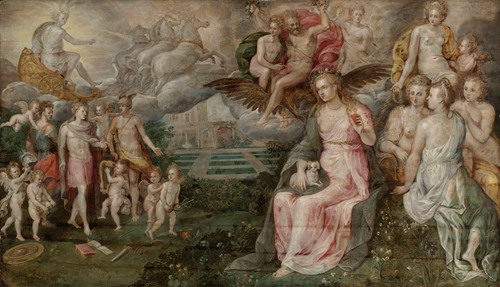
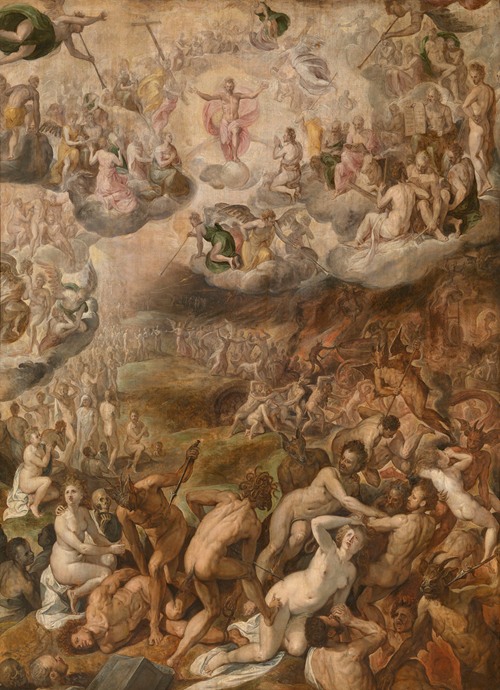
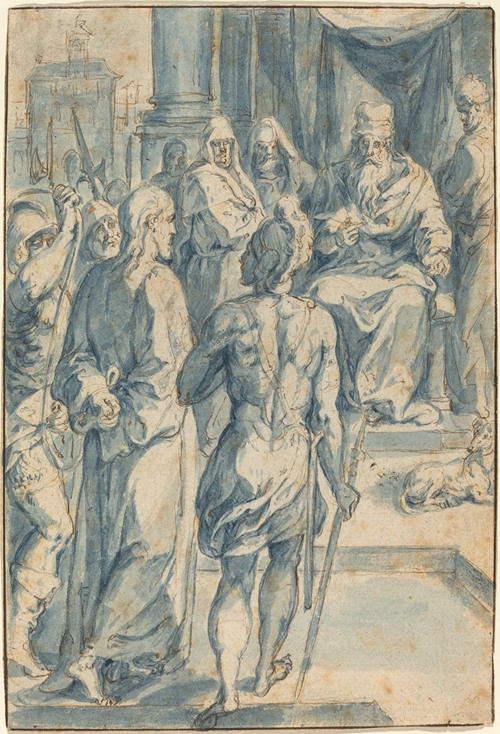
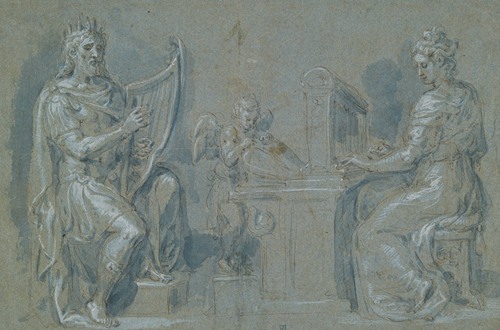

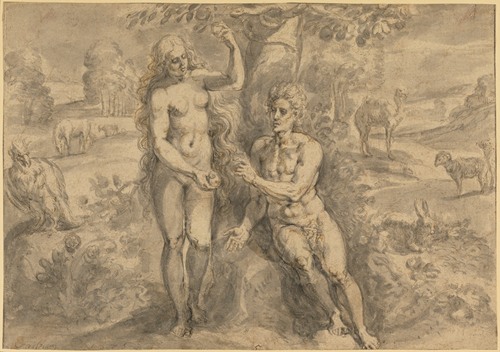
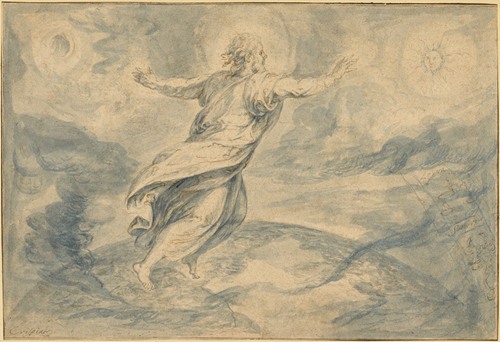
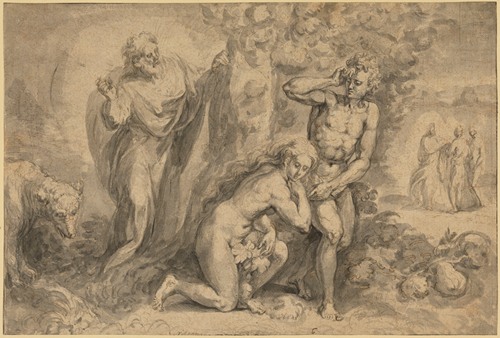
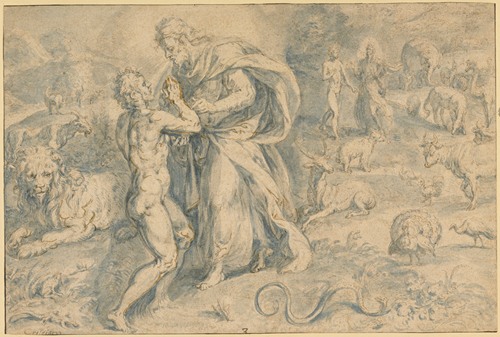
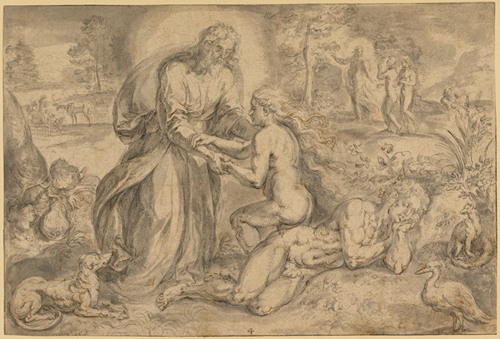
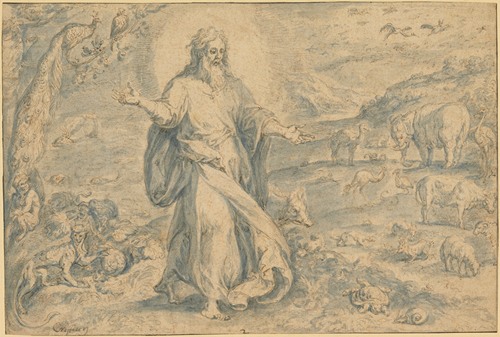
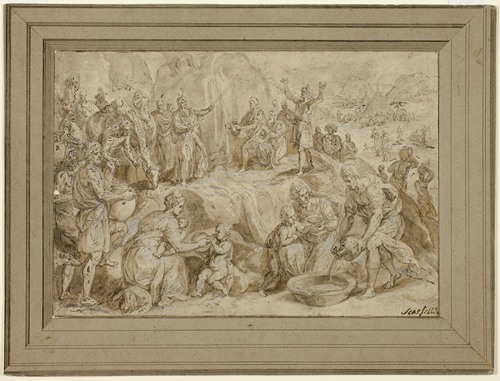
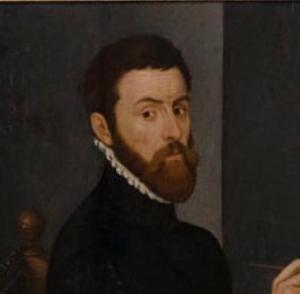

Chrispijn van den Broeck was a Flemish painter, draughtsman, print designer and designer of temporary decorations. He was a scion of a family of artists, which had its origins in Mechelen and later moved to Antwerp. He is known for his religious compositions and portraits as well as his extensive output of designs for prints. He was active in Antwerp which he left for some time because of the prosecution of persons adhering to his religious convictions.
Chrispijn van den Broeck was born in Mechelen as the son of Jan van den Broeck, a painter. His family members included artists who were active in Mechelen. His family also used the latinised name 'Paludanus'. The latinized name is based on the Latin translation ('palus') of the Dutch word 'broeck' which is part of the family name and means a marsh or swamp land. He was likely a relative of the sculptor and painter Willem van den Broecke and the painter Hendrick van den Broeck. He was probably trained by his father. He moved to Antwerp some time before 1555 since Chrispijn was registered as a master painter of the Guild of St. Luke of Antwerp for the first time in 1555.
Chrispijn was then working in the workshop of the leading history painter Frans Floris. Frans Floris was one of the Romanist painters active in Antwerp. The Romanists were Netherlandish artists who had trained in Italy and upon their return to their home countries painted in a style that assimilated Italian influences into the Northern painting tradition. Van den Broeck remained in Frans Floris' workshop until the master's death in 1570. He was together with Frans Pourbus the Elder one of the collaborators of Floris who helped finish Floris' paintings after the master had become incapacitated due to the alcoholism in which he had sunk in his later years. According to the Flemish contemporary art historian and artist Karel van Mander, Chrispijn van den Broeck and Frans Pourbus completed an altarpiece for the Grand Prior of Spain left incomplete at the time of Floris' death.
Van den Broeck became a citizen of Antwerp in 1559. He married Barbara de Bruyn. Their daughter Barbara van den Broeck (1560 -?) became an engraver who mainly created reproductions after her father's work. Crispijn may have lived in Italy for some time, but there is no evidence of this.
He received a pupil named Niclaes Ficet in his Antwerp workshop in 1577.
In 1584, van de Broeck resided in Middelburg for a short time to escape the political and religious unrest in Antwerp. His name was last mentioned in the Guild records of 1589 in connection with a payment. His wife is mentioned as a widow on 6 February 1591. Chrispijn van den Broeck must therefore have died sometime between 1589 and 6 February 1591, most likely in Antwerp.












